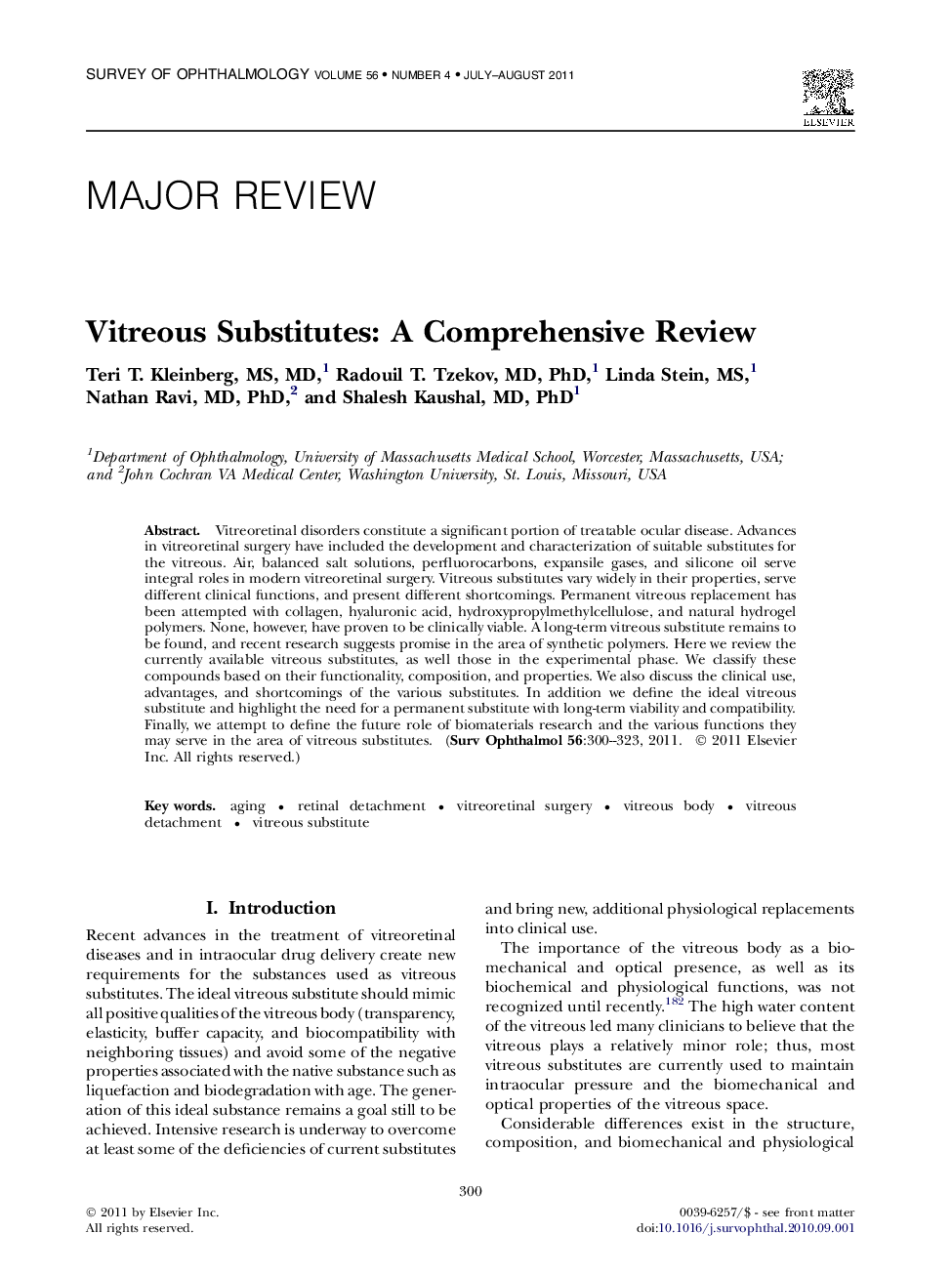| Article ID | Journal | Published Year | Pages | File Type |
|---|---|---|---|---|
| 4032629 | Survey of Ophthalmology | 2011 | 24 Pages |
Vitreoretinal disorders constitute a significant portion of treatable ocular disease. Advances in vitreoretinal surgery have included the development and characterization of suitable substitutes for the vitreous. Air, balanced salt solutions, perfluorocarbons, expansile gases, and silicone oil serve integral roles in modern vitreoretinal surgery. Vitreous substitutes vary widely in their properties, serve different clinical functions, and present different shortcomings. Permanent vitreous replacement has been attempted with collagen, hyaluronic acid, hydroxypropylmethylcellulose, and natural hydrogel polymers. None, however, have proven to be clinically viable. A long-term vitreous substitute remains to be found, and recent research suggests promise in the area of synthetic polymers. Here we review the currently available vitreous substitutes, as well those in the experimental phase. We classify these compounds based on their functionality, composition, and properties. We also discuss the clinical use, advantages, and shortcomings of the various substitutes. In addition we define the ideal vitreous substitute and highlight the need for a permanent substitute with long-term viability and compatibility. Finally, we attempt to define the future role of biomaterials research and the various functions they may serve in the area of vitreous substitutes.
